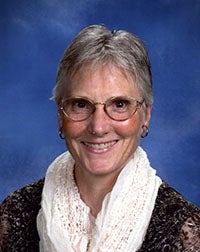Will the Middle East survive, heal?
Published 9:43 am Friday, March 20, 2015
Across the Pastor’s Desk by Nancy Overgaard
Recently, I was reminded of an uncommon spring; it came in summer. The woods were fully filled out when I arrived in early summer to serve on staff at a wilderness camp. A lush green canopy covered campsites and trails. We relished the beauty as we hiked, worked, ate and slept outdoors.
Then, without warning, wanton destruction began. Tent caterpillars chewed indiscriminately through the leaves. Day and night droppings fell like dripping faucets. The unceasing sound was as unsettling as the sight of the trees stripped bare. At night, we lay awake, hearing what was happening, helpless to stop it. By day, we moved about somberly, speaking in hushed tones, shocked by the devastation.
As suddenly as it started the persistent pattering stopped. The leaves gone, the caterpillars retreated to tents to await their renaissance. The stillness was more eerie than the incessant sound. The woods were like a funeral parlor. A pall hung in the air. The trees were reduced to twigs and branches as in winter, yet with no assurance spring would come. We had no idea if the trees would survive or succumb and die.
Then, we witnessed the impossible. Tiny buds appeared on trees as though it was spring. Slowly, leaves unfurled. Gradually, a leafy canopy unfolded. The woods were reborn, restored to their former beauty.
But, it is not trees on my mind. It is people. It is the wanton destruction of peoples in the Middle East and the question, can these people survive? Can they heal? Can their lives ever be restored? Newscasts detail such suffering, even seasoned reporters have cried.
Without warning, one man recounted, destroyers descended on his village, indiscriminately killing men and boys, capturing women and girls, subjecting everyone to unspeakable cruelty. The depth of sorrow in the eyes of those who escaped reflects the breadth of devastation. With houses destroyed, communities demolished, family members dead and missing, how can they recover?
Amidst strikingly similar extremes of suffering, the Prophet Isaiah offers hope to the hopeless, describing seemingly impossible depths of healing and recovery for brokenhearted, grief-stricken, despairing people who have been left only with ashes (61:1-8). So significant is their recovery they are compared to oak trees and share in rebuilding and restoring their broken communities.
How is this possible? And can it be replicated? Isaiah speaks of one on whom the spirit of the Lord rests. It is he who is able to heal the brokenhearted, comfort the mourning, give the grieving beauty for ashes, replace mourning with gladness and despair with praise. Isaiah offers greater hope that through this same one, God will one day bring an end to violence, ruin and destruction, even to sorrow (60:18-20) and establish a realm where righteousness and justice prevail.
One reason the servant Isaiah speaks of as singularly successful in comforting the suffering is that God has gifted him with the words to sustain the weary (50:4). Another is that he, himself, has experienced such extremes of suffering (Isaiah 50:6-7, 52:13-53:12) he is able to understand ours and help us through them (Hebrews 4:14-16). He is even able to carry our sorrows (Isaiah 53:4) if we let him.
Who is this extraordinary servant of God? It is Jesus (Luke 4:16-21). His invitation is for all. “Come to me, all you who are weary and burdened, and I will give you rest,” (Matt. 11:28). It will take time, but he is able to do above and beyond all we could ask or hope for (Ephesians 3:20). The woods are my reminder.
The Rev. Nancy Overgaard is part of the Freeborn County Ministerial Association.



